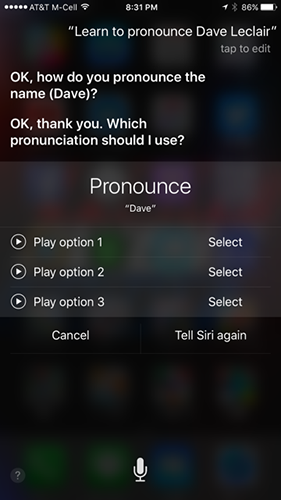Have you tried to hit the 6-pin as full as possible? And to score it higher to 10 you need to know the alley conditions and the accuracy. Read more on how to score higher points. They could be helpful to you when you are playing.
THE 6-10 SPARE
The rather common 6-10 leave usually results when the ball breaks "high" on the headpin. That is, it hits the pins more to the left of the 1-3 pocket than the bowler intended. The most successful method of shooting this spare is to move to the left side of the approach, and then go toward the foul line in a direct line with the 6-pin. Do not move forward in a line exactly parallel with the gutter. The object is to hit the 6-pin as full as possible, since it is the key pin in this spare. If it is struck properly the angle will take out the 10-pin as well. Accuracy is most important, since it readily can be seen that if the hit on the 6-pin is too thin on the left-hand side, the 6-pin is likely to slide past the 10-pin. This spare emphasizes the importance of knowing alley conditions. Since I use my hook ball delivery to pick up this spare, I must know how the hook will react on the alley. If the alley is too slick or fast, my hook may not take, and the ball may slide past to the right of the 6-pin. If the alley is too slow, I might hook inside the 6-pin.
THE 2-4-5 SPARE
For years, teachers of bowling have taught the theory of "giving the ball the entire alley possible," that is, shooting left-side leaves from the right side, and vice versa. In nearly all cases, this system is still best. The 2-4-5 leave, however, is different, and the way I play it may surprise a lot of bowlers. The 2-4-5 leaves usually results when a ball coming into the 1-3 pocket doesn't quite finish, and a very light pocket hit is recorded. The main purpose in shooting at the spare is to prevent a cherry pick or chop.
If I were to shoot this spare in the conventional manner (from the right side), I could fall easily into such an error, for the ball is likely to strike the 2-pin full and to carry through, picking up only the 4-pin, and leaving the 5-pin still standing. So, instead of widening the angle, I try to cover the spare as much as possible. The 2-pin is the key pin here, and it can be hit from either side. In order to give myself the best possible angle at which to count, I move to the left side of the approach, knowing that this permits my hook to come in on the 2-pin at the best covering angle. This procedure should be used on such leaves as the 2-5, the 2-5-8, and the 2-4-5-8, the latter known as the "dinner bucket."
THE 1-2-4 SPARE
When the ball finishes late or does not hook enough, the bowler very often leaves the 1-2-4 spare. This action of the ball can be likened to a curving baseball which misses the inside corner of the plate. The key pin is the 1-pin, of course. I try to get a solid "Brooklyn" hit squarely in the 1-2 pockets. One might make this spare with a 1-3 pocket hit, too, but unless it is accurate, the bowler is in for trouble, for if he misses the 1-pin on the right, he has missed all three pins. On the other hand, if the bowler aims at the "Brooklyn" side, or 1-2 pockets, and misses the 1-pin, he can still get the other two, unless his delivery has gone completely out of control. It's an axiom in bowling that the difference between two pins and none at all may mean the difference between victory and defeat. This angle of approach is also used when the bowler is confronted with the 1-2-4-7 and the 1-2-8.
The above different ways might have given you some ideas on how to hit and pockets points when playing the game of bowling. These things are very important to know when you are playing this game. So it is always good to know your game before you step into the arena.






 Borderlands 2 – Fight for Your Life & Second Wind Guide
Borderlands 2 – Fight for Your Life & Second Wind Guide Guitar Hero Live - New Songs revealed
Guitar Hero Live - New Songs revealed Fallout 4 Guide: PC Performance INI Tweaks
Fallout 4 Guide: PC Performance INI Tweaks How to Change the Way Siri Pronounces Names
How to Change the Way Siri Pronounces Names Retro Remixes: Punktendo, 1D Wolfenstein and Other Fan-Made Games
Retro Remixes: Punktendo, 1D Wolfenstein and Other Fan-Made Games